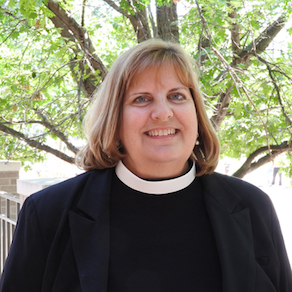Daily Business Report-June 11, 2019
The initiative replaced pensions for all new city employees except police officers with the 401(k) retirement plans typical in private industry.
Council votes to help unions
overturn San Diego pension reform
Times of San Diego
The San Diego City Council voted 6-3 in closed session Monday to back a labor-led effort to overturn voter-approved pension reform.
The action follows the California Supreme Court’s decision to invalidate Proposition B, ruling it was improperly placed on the ballot in 2012.
The initiative replaced pensions for all new city employees except police officers with the 401(k) retirement plans typical in private industry.
Councilmember Scott Sherman, who voted with the minority on the council, noted that Proposition B was “overwhelmingly approved by voters” in the aftermath of the city’s pension crisis.
“I am deeply disappointed that instead of doing the right thing and defending this clear mandate in court, the council chose to ignore the will of a vast majority of San Diegans and back their union financiers instead,” he said.
The city will likely have to pay employees the difference between what they would have received via the original pension system and the current system, plus 7 percent annual interest.
Former Councilman Carl DeMaio, who led the pension reform effort, vowed to fight in court.
“San Diego’s voters deserve their day in court — and I’m working with a coalition of taxpayer advocates to ensure they get it,” he said.
__________________

State utilities take the wildfire
liability crisis to the U.S. Supreme Court
After initially declining to step in, the California Public Utilities Commission moved Friday to defend its decision before the U.S. Supreme Court that, utilities say, pushed Pacific Gas & Electric Co. into bankruptcy and threatens them all.
California’s wildfire liability crisis can be traced to decisions stemming from fires that destroyed 1,340 homes in San Diego County in October 2007.
San Diego Gas & Electric Co. asked the California Public Utilities Commission for permission to pass $379 million in costs related to the 2007 fires to its 3.4 million customers in Orange and San Diego counties. The commission refused, leaving SDG&E’s stockholders to shoulder the cost.
San Diego Gas & Electric appealed and lost before a state appellate court. Now, SDG&E has turned to the U.S. Supreme Court, writing: “California’s privately owned utilities face crippling liability for damage to private property from wildfires that have become the ‘new normal’ in California.”
The utility contends that California’s style of inverse condemnation violates its 5th Amendment rights by taking the utility’s property without compensating it, and warns: “These problems will only get worse as wildfires (and wildfire litigation) increase exponentially with climate change.”
Siding with SDG&E: Southern California Edison; PG&E’s major shareholders.
The Public Utilities Commission last month waived its right to respond by the court’s May 30 deadline. On Friday, however, a commission lawyer askedthat the Supreme Court give it until July 31 to file an answer.
Note: The Supreme Court agrees to hear a fraction of the appeals filed.
— Dan Morain, CALmatters
__________________

Median home prices in San Diego
County up to record levels
Source: Greater San Diego Association of Realtors
Following a lull going back to last fall, San Diego County home prices were back up to record levels in May, according to housing statistics compiled through the San Diego Multiple Listing Service by the Greater San Diego Association of Realtors.
The median price for single-family (detached) homes was $660,000 in May. Attached properties (condominiums and townhomes) reached their highest recorded price at $434,000 last month, up more than 3 percent from just a month ago. Overall, all home prices so far in 2019 are up 2.7 percent for resale properties.
Single-family home sales in May were only slightly higher than April, while sales of condos and townhomes saw a major jump of more than 7 percent from the previous month. For the year to date, sales of existing homes are down by nearly 7 percent from the same period in 2018. The time between when homes go on the market to when they close is down to an average of 28 days.
“Sellers still have the upper hand in this market,” said SDAR President Kevin M. Burke. “However, buyers who take the time to research neighborhoods should find more homes for sale than they would have a year ago.”
In May, the ZIP codes in San Diego County with the most single-family home sales were:
92127 (Rancho Bernardo West) with 55
92078 (San Marcos South) with 51
92028 (Fallbrook) with 49
92065 (Ramona) with 48
92024 (Encinitas) with 46
The most expensive single-family property sold in May in San Diego County is an oceanfront home in the Village of La Jolla, built in 1986, with 6,000 square feet, 3 bedrooms, 5 baths, and a sale price of $8.65 million.
__________________

Research: The science of smell
How is our sense of smell linked to our health?
San Diego State University nutrition professor Surabhi Bhutani examines how certain smells are associated with memories and feelings, and how our smells can trigger chemical responses that influence our emotions, well-being and eating habits.
The same chemical responses that make food enjoyable cause people to overeat, leading to health issues like obesity, heart disease and diabetes. Bhutani’s research aims to understand the biological link between smell and hunger.
“When we smell food, it triggers a cascade of hormonal and brain chemical interactions that make us want to eat. We need similar interactions to tell us when we are full,” Bhutani explained. “But when these communication systems are broken, we make unhealthy food choices and eat too much….The better we can understand how smell and hunger are related, the better we can help people improve their health.”
Bhutani came to SDSU in 2018 from Northwestern University, where she was a postdoctoral fellow. She received her Ph.D. in nutrition from the University of Illinois.
__________________
Cubic awarded contract to develop
small form factor radio for U.S. Air Force
Cubic Corporationannounced its Cubic Mission Solutions business division was awarded a delivery order from the U.S. Air Force for the development and demonstration of a Small Form Factor Radio prototype for the Data Link Enterprise (DLE). The system is composed of one ground and one air component for improved communications capability, providing ground-to-air and air-to-ground real-time communications.
Cubic’s state-of-the-art solution is a lightweight, airborne and ground radio system delivering SFF capability in the most compact tactical radio prototype. In addition to a number of standard waveforms, Cubic’s system will demonstrate an internally developed, protected waveform known as “Boomslang.”
“We are very pleased to have been competitively selected by the USAF to develop and demonstrate our cutting-edge small form factor radio solution for the DLE,” said Mike Twyman, president, Cubic Mission Solutions. “Our system design is based on proven and mature technologies which we have implemented for a number of successful Department of Defense programs. We look forward to leveraging our expertise to provide the lowest risk and most capable solution for the DLE.”
__________________
Mayor and interfaith leaders to welcome the first
woman as bishop to the Episcopal Diocese of San Diego

Interfaith leaders in San Diego will gather Thursday for a press conference at St. Paul’s Episcopal Cathedral, 2728 Sixth Ave. at 10:30 a.m. to witness Mayor Kevin Faulconer and First Lady Katherine Stuart Faulconer welcoming the first female bishop to the Episcopal Diocese of San Diego.
In February, delegates from the 43 congregations that comprise the Episcopal Diocese of San Diego elected the Rev. Canon Susan Brown Snook on the first ballot.
Snook’s vision for the Diocese of San Diego includes a focus on diversity, advocacy, service, evangelism, youth and young adults. In the first months of her episcopacy, she intends to listen to the people of the diocese in order to formulate a plan for how Episcopal churches can follow Jesus and serve their communities. She most recently served as the canon for church growth and development in the Episcopal Diocese of Oklahoma where she earned a reputation as a church growth expert.
__________________
Darlene Marcos Shiley donates $2.6 million
more to the CSU Institute for Palliative Care
Philanthropist Darlene Marcos Shiley has donated an additional $2.6 million to the CSU Institute for Palliative Care, which is now the Shiley CSU Institute for Paliative Care. The latest gift brings Shiley’s total gifts to the CSUSM Foundation to $6 million, the majority of which has gone to the Institute, and makes her the most generous donor in the university’s history.
Shiley has a particular interest in palliative care that she developed as she cared for her husband, the renowned artificial heart valve inventor Donald Shiley, before he died of a difficult illness in 2010.Palliative care is health care that addresses each patient as a whole person, including his or her physical comfort, confidence, emotional well-being, spirituality and dignity.
“To have watched my late husband Donald decline over four years was truly devastating,” Shiley said. “But we both personally experienced the benefits of palliative care during the period, and as I quickly learned, palliative care isn’t just for those who are afflicted. It’s also for the loved ones and caregivers of people dealing with serious or chronic illness.
Besides providing more support to the Institute, Shiley made the gift with the intention of paying tribute to her longtime friend, Dr. Karen Haynes, who is retiring at the end of June after 15½ years as CSUSM’s president. Shiley requested that the center be named the Shiley Haynes CSU Institute for Palliative Care, and CSUSM will pursue the name change after the requisite two-year period post-retirement for an individual who has served the CSU in an administrative capacity.
__________________
San Diego Architectural Foundation opens
nominations for the 2019 Orchids & Onions program
The San Diego Architectural Foundation (SDAF) has announced the return of the 43rd annual Orchids & Onions program with the opening of public nominations for the best and “not so best” projects in San Diego County. The community can submit their nominations now until July 6. Projects that garner the most online interest during the nominations period become eligible to be nominated for a People’s Choice Award in August.
Participants can nominate projects for the following categories: architecture, urban planning, landscape architecture, interior design, historic preservation, and miscellaneous. The “miscellaneous” category encompasses other environmental design features such as public art, lighting programs, and wayfinding systems.
Following the nominations period, a group of design professionals determine the official Orchids & Onions based upon the submissions. Between Aug. 1 to Aug. 31, the public can vote online for the People’s Choice Award. The community-based program culminates with the 43rd annual Orchids & Onions Awards Ceremony at the U.S. Grant Hotel on Oct. 3. The public can nominate a project at www.orchidsandonions.org/nominate.
__________________
Report finds California above national
average for sexual harassment rates
In the state of California, reported incidences of sexual harassment are 5 percent higher for women and 10 percent higher for men than the national average, report the authors of a joint study produced by the Center for Gender Equity and Health (GEH) at University of California San Diego School of Medicine and the nonprofit organization California Coalition Against Sexual Assault (CALCASA).
“California has led the nation’s focus on the #MeToo and #TimesUp movement. This report offers a stark look at the widespread prevalence of verbal, physical and cyber-based sexual harassment in the Golden State,” said Anita Raj, professor in the Department of Medicine at UC San Diego School of Medicine and director of GEH.




